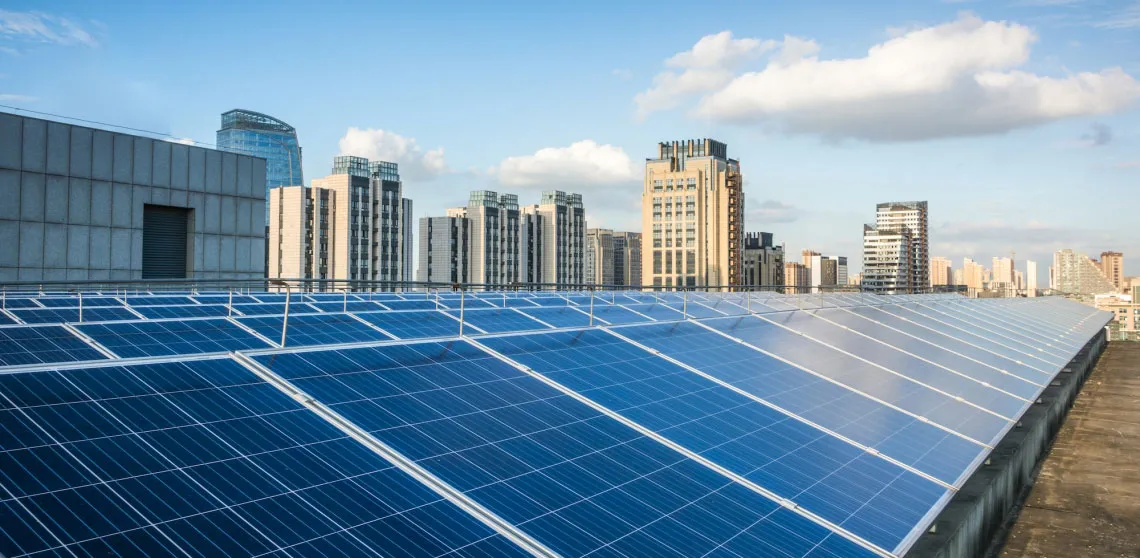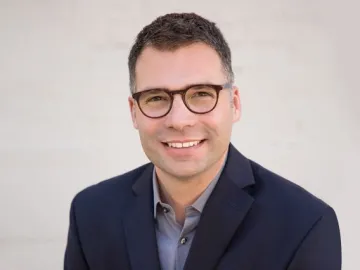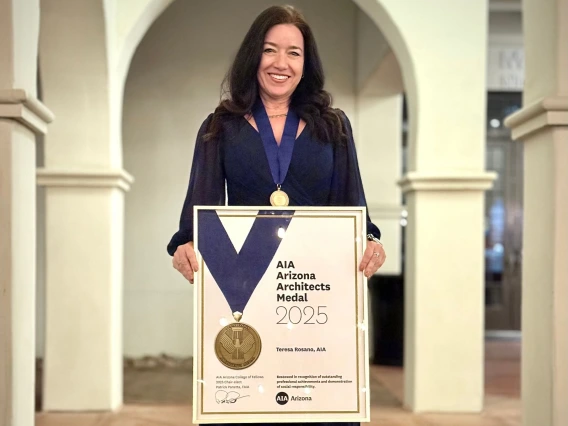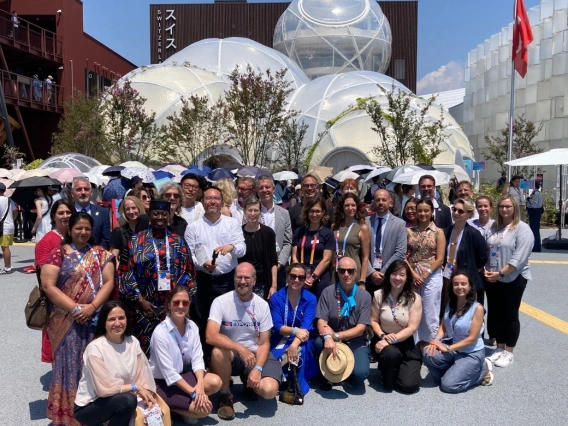Sustainable Design Expert: The Building You're Sitting in is the Elephant in the Room
CAPLA Thought Leadership

Listen to Jonathan Bean speak to the 'Elephant in the Room' on KJZZ
When it comes to drastically reducing carbon emissions in the United States, cutting back on air travel and buying an electric car won't really be enough, a University of Arizona researcher says.
"Those things absolutely make a difference," said Jonathan Bean, an assistant professor in the College of Architecture, Planning and Landscape Architecture, whose research explores sustainable built environments.

"But the elephant in the room is buildings," he added. "That's where we really need to focus."
The energy used to build and operate buildings—for things like heating and cooling or powering appliances—amounts to about 38% of global carbon emissions, Bean said. By comparison, transportation and industry account for 23% and 32%, respectively.
The Biden administration announced in late April a goal to reduce U.S. greenhouse gas emissions by 50% by 2030. Rethinking building designs will likely be central to achieving that, said Bean, whose students have won national awards for designing new ways to cool buildings.
But those changes can no longer be incremental under the timetable the administration has set for the goal, Bean said.
"Our systems and regulations, particularly building codes, are set up to make incremental progress," he said, adding that building codes are typically revised every three years. "If you plot out the graph of past improvement in energy code versus where we need to go for a carbon-neutral future, you don't get there with incremental change."
Preparing Future Architects for Climate-Positive Buildings
Bean holds a joint appointment with the National Renewable Energy Laboratory, run by the U.S. Department of Energy. The lab conducts research aimed at advancing science and engineering related to energy efficiency and renewable power technology.
Through the appointment, Bean has been researching how the country's workforce will meet the demand for more energy-efficient buildings. Specifically, Bean is looking at ways to make the building design process more efficient.
"Right now, when you design a building, it's not uncommon to have the same two, three, four, five parties regenerate the same drawing, which is not terribly efficient," he said. "So, how do we make that process more efficient?"
Bean hopes the next generation of architects enter the field with the technical knowledge and practical experience to drive the systemic change needed to make climate-positive buildings—those that produce more energy than they consume—the new standard.
To do that, Bean and his students, in the fall, will begin building the Climate-Positive Building Lab on the ground floor of the university's Civil Engineering Building. The lab is a partnership between CAPLA and the College of Engineering and is funded by a grant through the UArizona Provost's Investment Fund.
"The intention of the Climate-Positive Building Lab is to give students the opportunity to interact with the materials, the techniques and technologies that help buildings perform well, so that they can understand how to put those things together in a way that makes buildings that solve the problem that we have in front of us," Bean said.
The Climate-Positive Building Lab will provide students and faculty the space and tools to understand how energy works in the real world. For example, a climate chamber that Bean and his students plan to build in the lab will allow them to test building material effectiveness by manipulating the chamber's temperature and air quality.
Anatomy of an Efficient Building
Nationwide, energy experts and architects have made strides in recent years toward understanding the best ways to make new and existing buildings more efficient energy users and, in many cases, energy producers, Bean said.
When a building can create its own energy—through solar panels, for example—less energy from a power plant is needed to heat, cool or light the building.
Much of Bean's teaching and research focuses on passive design, which involves designing a building with the outside environment in mind as much as possible. This could mean, for example, not putting windows on the west-facing side of a building in a warm climate to prevent overheating.
Another important consideration is how leaky a building is, Bean said. When a building doesn't have a lot of air leaks, less energy is spent conditioning the air that finds its way in from outside. Building airflow has become even more important in the age of COVID-19, he said, since the coronavirus can be transmitted through the air.
Building materials also have a huge impact on a building's carbon emissions, and the worst offender is also perhaps the most ubiquitous: concrete. The demand for concrete, coupled with the carbon output needed to produce it, make it the building material with the biggest carbon footprint, Bean said. Addressing that, he added, will require changes to city building codes, which are often tilted toward the use of concrete and other carbon-intensive materials.
"From a materials innovation perspective, it means we need to find alternatives for concrete," Bean said. "But then we need to look at the rest of the building and the global warming potential for all the materials used in it."
To help achieve the Biden administration's carbon emissions goals, Bean said, every new building needs to become its own power plant and be designed with the outside environment in mind to be as efficient as possible. Millions of existing buildings should also be retrofitted.
Such an undertaking will require buy-in not just from architects, but also engineers, contractors and even policymakers who oversee building codes across the U.S., Bean said. The university's Climate-Positive Building Lab, he said, aims to arm soon-to-be architects with the knowledge and experience necessary to drive the changes.
"Once you've had that experience, you're in a much stronger position to explain to other people how something works," Bean said. "That's really important because of the way that knowledge works in the building industry. At the end of the day, people in the building industry are who you need to convince to get on board to do something differently."



